Graham Reid | | 19 min read
Patea Maori: Ngoi Ngoi
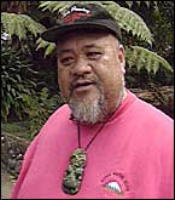
The old wooden Methodist church in a
side street in Patea isn’t used much anymore. A lot of places in
Patea aren't. It's a town battered by the economic ideas of
successive governments and people have had to move out.
The work just isn’t there anymore.
But at least once a week the cobwebs in
the church rafters shake when the Patea Maori group, the town's most visible
success story of the past four years, use it as a rehearsal space.
It’s the Monday night before the soon
to be doomed Neon Picnic and the group has gathered to run through
its set and organise transport for the coming Friday.
They are supposed to open the festival.
Enthusiasm is high and members have
come back from as far away as Wellington to get things just right.
But it’s not an intense situation.
There is a lot of laughter and nobody seems in any hurry to leave
when things finally wind down around 8.30, three hours after the
20-odd members gathered in the tiny room.
The group is feeling good for a lot of
reasons. The forthcoming festival, the rehearsal going well and, best
of all, the new album Poi E has been out a month and is selling steadily
and quietly.
Currently available only on cassette
-- the album and CD versions will be available later this month -- it
has sold somewhere close to 2000 copies, a remarkable sales figure
considering it was deliberately released with no media ballyhoo and
has so far had no ads in the music press.
The album marks another milestone in
the Patea Maori group story, one which is well known for the
involvement of the club's prime mover and producer, Dalvanius.
The new album is very much Dalvanius’
brainchild -- and a complex and tightly integrated one at that.
It draws together threads of Ngaa Rauru
traditions with a sure sense of belonging to the Patea/Hawera area
where this sub-tribe of the Taranaki peoples live.
It incorporates traditional lyrics –
lyrics from various kaumatua and the contemporary synthesiser sounds
which were the hallmarks of the Poi E single . And flying men.
Flying men?
The highly-coloured album cover by Joe
Wylie -- from ideas by Dalvanius – is a clue to the contents.
Half-men, half-tuatara figures emerge
from water in front of Mt Taranaki and are held on a rope by a
warrior mounted on a moa. Above, winged men, the kahui rere, swirl in
flight.
Dalvanius laughs and confesses a
childhood passion for comic book heroes ("The Phantom and
Mandrake were my favourites") and how he would like figures like
the kahui rere developed into animated feature films to give Maori
their own indigenous heroes.
But there is also something quite
serious in the imagery of the kahui rere and men riding moas.
The Takirau Marae is nearly 50km up the
winding Waitotara River valley, nestling in a warm bowl of green
fields under the high cliffs.
It is at the northern apex of the
traditional boundary of the Ngaa Rauru people and is a focal point
and refuge for Dalvanius and the members of the Patea Maori group. It
was here Dalvanius came to consider the direction of the music and
most recently to compose with Sonny Kauika Stevens, a kaumatua of the
Ngaa Rauru people.
It is here too that the kahui rere
settled after flying up from the coast.
The traditional belief in the flying
men is unique in Maoritanga -- possibly in Pacific history. According
to S. Percy Smith, writing in 1910, “a placenta was cast into the
sea and in due course became a man whose name was Whanau-moana or
Sea-born. He had wings, as had all his descendants. At first none of
these beings had stationary homes, but flew about from place to
place, sometimes alighting on the tops of mountains . . .“
The last of these people was named Te
Kahui Rere.
“The kahui rere are my ancestors,"
says Dalvanius, “and as a child of Ngaa Rauru, my tribal
affiliation on my mothers side, it‘s something we grew up with.
They were our tipuna, our ancestors, and are not just mythological.
They are part of our living being."
He points to the high cliffs and
indicates tapu areas where he says bones of the kahui rere are to be
found.
Ngaa Rauru traditions also speak of
domesticated moa in this area.
Since the death of Ngoi Pewhairangi in
early 1985, he has come to this place more and more often.
The relationship between Dalvanius and
Ngoi Pewhairangi has often been told, but bears retelling.
“She was the woman who wrote E Ipo,
the song that I produced for Tui Teka. On a tour of the East Coast
with Tui she sent me a message to me saying if I went past her house
she'd kill me,” he laughs.
"So naturally I thought I’d
better go and see this woman who had written the song. In fact the
version she'd heard and didn't like was one he‘d done in Australia.
“So I went to meet her and ended up
staying five, maybe six weeks. We just kept writing songs together
and comparing politics.”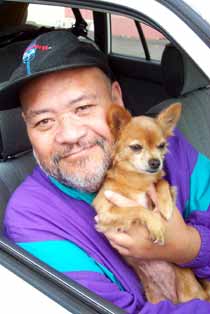
At the time, he admits, he was "a
textbook Maori" in terms of his knowledge of the language and
Pewhairangi was committed to a reawakening of the language in people.
"She was a very political figure,"
says Dalvanius,” “and had headed a movement called Te Ataarangi,
The Awakening".
But his work with Pewhairangi cost him.
“I got ostracised by a lot of people
for working with someone from Ngati Porou. However, we had formed
such a strong bond it was water off a duck's back to us. She was a
tohunga and a matriarch – and a very strong person musically and
politically. People look at our songs like Poi E and think they’re
just Maori songs with a dance beat, but they are quite wrong."
The long-awaited album should lay that
misconception to rest. It is a concept album in the nicest possible
way, free of the grand conceits that the label “concept album"
suggests.
Dalvanius calls it "a living
memorial to Ngoi” who died when he and Patea Maori were in England
as part of their British/American tour in ‘85.
The death of Ngoi Pewhairangi and some
club members in the intervening years, and Dalvanius becoming
involved in the soundtrack to the film Ngati, meant the Poi E album
was put on hold.
"The fact that it got released at
all is a milestone in itself," he laughs, “and its' selling so
well is a bonus.”
The deaths in the whanau also meant it
deliberately came out quietly before Christmas without the usual
media hype surrounding such things.
“I don’t see that as being off any
consequence," he says about press publicity. “The single Poi E
was a sleeper, it took l8 months to happen and this album is
something that’s going to sell from now till the end of time."
The album begins with a recording of
the sea by the late Greg Carroll, Dalvanius' cousin and road manager
of U2 who was killed in 1986. The journey from Hawaiiki is sketched
in with aural references and by narrator Don Selwyn.
Ko Aotea, the second track, is “an
old chant which is strictly ours in Patea” and speaks of the Aotea
canoe, a replica of which stands in Patea.
The fourth track illustrates the
complexity of imagery Dalvanius is working with.
The waiata are by the late Ruka
Broughton, the noted Maori scholar who wrote his MA thesis on "The
Origins of Ngaa Rauru" and Hoani Heremaia, “the living prophet
for Ngaa Rauru and Patea Maori.” A haka in the middle by Patea
Maori is about the taking of the Parihaka land by the constables.
"The waiata sung by Hoani says,
‘When this one man died all Maoridom stood still' and it could be
referring to Te Whiti, Tohu, Tawhiao . . . or Ruka Broughton. For me
they were all prophets,” says Dalvanius.
The album also touches some deeply
personal bases for him.
"In Maoridom there are a lot of
Romeo and Juliet romances and that's what my parents' was like. What
Ngoi and I wanted to do on the song Ngakau Maru was to state that
close-knit base of rural Maori families. The lyrics express the total
loss my mother felt when my father died and in turn what I
experienced when she died.”
The traditional song of farewell, Hei
Konei Ra, takes out the first side . . . but with the distinctive
Dalvanius production job.
"Everyone in the studio calls me
Dalvanius De Mille,” he laughs about his widescreen sound. "My
ultimate hero is Phil Spector who either made some classic or a real
bomb.”
Talk of his production method leads him
into a conversation about how he thinks about sound.
“A lot of musicologists say the Maori
had no percussion. We did. We had stones we used like castanets and
certain trees were used as warning about marauding tribes. They can
be considered percussion.
“But nobody thought of the swishing
of the pui puis as percussive. In the studio I mike up all the pui
puis separately and in the track Taranaki Patere-Kahuri there’s
nothing but the pui puis.
“The traditional poi was made from
raupo which also has the most amazing percussive sound. I had a close
up mike on each of the pois, too.”
The recording studio where he compiled
the separate tracks dating from as far back as 1983 is a long way,
physically and emotionally, from the Takirau Marae where he comes on
the Tuesday morning to speak with Sonny Kauika Stevens.
Stevens has written the words to a tune
telling young people to hold fast to their language. It is written
with the kohanga reo in mind and takes its first lines from T.W.
Ratana, the religious and political leader from the Wanganui
district.
Stevens is the guardian of much of the
Ngaa Rauru people's history and in the warm valley under the imposing
hills where the kahui rere once flew, his presence is met with a
natural respect.
Stevens is a naturally modest and quiet
man and speaks in a low voice about the song.
"It says hold fast to your Maori
language because it is something handed down to our tipuna from our
Supreme Being, It says be strong and hold fast.
“We put this together when I came
back here to get in touch with my Maori roots," says Dalvanius.
“Coming here you know these people, the tangata whenua, are
committed to this thing.
"I don‘t like all these
part-time Maori Affairs tutors who are weekend Maori. These people
here have their hands in the dirt and just about everyone in Patea
Maori has roots relations here.
"The marae is our last refuge."
The Takirau Marae, however, is more
than a retreat for Dalvanius. He is hoping to establish a women’s
refuge in the area and is currently negotiating in conjunction with
the people of the marae for better amenities.
But there is another reason for him
coming here this particular morning. He wants to record the song for
Stevens so the people can learn it.
Inside the wooden dining hall, a huge
tape recorder miraculously appears as it from nowhere looking
incongruous in the battered, empty building.
Dalvanius settles himself on to a chair
in front of the tape recorder, his 20-stone plus figure bulging under
his distinctive pink tracksuit. He picks up the glitter and indicates
that he composed the tune on piano so we should forgive his
guitar-playing.
The room goes quiet and the half-dozen
people who have wandered in move outside so as not to create any
distraction.
He begins to sing.
His voice is clear and confident and
it’s a curious moment.
His massive pink figure is bizarre in
the room where the cool air is buzzing with flies.
Aside from the music and the flies,
everything is quiet and still.
Outside, the hills blaze a rich green
under the clear blue sky and even the most cynical of city-born
hearts can feel a special, almost timeless and mysterious, quality
about the place and the day.
He finishes the song and rewinds the
tape to overdub the first harmony part.
He does it again and again with each
harmony lightly different from the last.
The tune is finished and he turns to
the door and yells, “Yeah you can come back in now.”
The magic moment is broken as the
laughter from Stevens and his family brings the real work back into
the room.
“Before I went overseas with the club
in '85, “Dalvanius has said earlier, “Ngoi said she wanted to
tone our relationship down because she felt it was time I worked with
others preferably people from Taranaki, my own people.
“Sonny is a kaumatua, very much like
Ngoi. He has an aura about him and he uses what I call the classic
Maori language. A lot of the old words are dying for want of use and
the classic Maori is being lost for the convenience of the new
Maori."
He illustrates the “new Maori” by
words like niupepe (newspaper).
“I see my role as working with people
like Sonny who have that gift of using classic Maori and that‘s why
I’ve chosen to remain here"
He has some especially cutting
comments, largely unpublishable, about "weekend Maoris" and
those from certain government departments who would tell the people
on the various marae in the district, nine of which make up the
Rangitaawhi Trust - the self-help scheme which has grown up in Patea
in the wake of the closure of the freezing works -- how to live.
“These people here,” he says
pointing emphatically around the Takirau Marae, “are the real
people who are in touch with Maoritanga. Some people said to me I was
just cashing in to make money out of the Maori and I say, 'What
money?' If I just wanted to make money I know which side my bread's
buttered on. I sang a club over Christmas and got the money to paint
my house.
“If I sing in English I get me award
rate, if I sing in Maori it’s negotiable. That’s the fact, but
that's not the Pakeha's fault. It’s ours. We’ve allowed everybody
else to make money out of our language but ourselves."
In that sense, he is an unashamed
hustler who knows facts and figures about record sales, what kinds of
fees to ask for, and how to work in the Pakeha system. It makes him a
formidable opponent across a negotiating table and probably a very
unpopular one from time to time.
However he has done it: taken Patea
Maori to the top of the New Zealand charts and around Europe and
America.
In 1989, the group embarks on a
coast-to coast Stateside tour and the plans don‘t stop there.
The Poi E album is part one of a bigger
scheme. It is the Maori songs for a stage show about a young Maori
boy reaching out to find himself and is, he admits, autobiographical.
“The musical, Raukura, will show how
disoriented as a people we are. We’re always blaming the Pakeha but
how much can we look at ourselves in the mirror and ask if we aren’t
also part of the perpetrators of our own genocide. I think in a lot
of ways we are . . . and saying that has got me into a lot of
trouble," he laughs.
"The album is the Maori songs and
the second part, which is going to take several thousand dollars, is
the English part.”
Get Dalvanius talking - and he'd be the
first to admit that's not difficult – and the schemes and ideas
pour out of him. He envisages three separate Patea Maori groups
touring the world constantly.
He has written dozens of songs, with
Ngoi Pewhairangi, with Stevens . . . and the Kohanga Reo Rap song is
still waiting in the wings.
"It was supposed to be on the
album but I decided not to put it on because it’s got English in
it. I wanted the first album to be a memorial to Ngoi who always
reminded me to speak Maori if I ever answered her in English."
But that is just the music side of
thing.
Back in Patea, the Rangitaawhi Trust
looks after a number of job schemes, all of them involving Patea
Maori group members.
Around the corner from the old
Methodist church is the abandoned sewing factory, now turned into a
carving school under the tutelage of Patrick Davis, one of the
trustees and, naturally, a member of the Patea Maori group.
On the floor is an impressive honours
board being carved for the Patea High School based on designs from an
old god stick found in the Patea River.
“The design is not quite the same as
the god stick," says Davis, "but it nearly is. You don't
actually copy those sorts of things. We‘ve done carvings for the
hospital and the primary school too . . . and this,” he gestures
towards a huge carved piece nearly two metres long and awesomely
heavy, "is a gateway for the high school."
The carving school, an Access scheme,
has had a number of young people go through it. Currently there are
half a dozen people at work including a number of women whom he has
started off on cattle-bone and, when it’s available, whalebone
carving.
"When the first group went off to
America, one of the club's members had a tiki made of beef-bone.
Someone there thought it was whale and offered him $500 for I,” he
says laughing. "But he wouldn't part with it – he was afraid
they’d find out it was just beef."
The bone and wood carving are offered
for sale around the corner at the Poi E centre and occasionally as
far afield as Auckland.
Some of those who have been through the
carving school are now tutoring in other similar schemes. One
ex-student is now in charge of a group of eight in Hawera.
"With the closing of the freezing
works,” says Dalvanius, “there has been a revival of the true
tikanga of our people including the waiata, the music, and especially
of Taranaki carving. That honours board made after the style of a
piece of local traditional carving is true Ngaa Rauru art. Classic
Maori art.”
Directly across the road from the
carving school is another facet of the Patea survival story, once
again part of the Rangitaawhi Trust. It's an engineering school run
by John Matthews where students on a 20-week Access scheme learn
basic engineering skills.
“Basic is nothing though,” says
Matthews. “You can‘t just teach people a few basics and then
expect them to get a job in engineering. You've got to have basics,
intermediate and advanced levels. That's how you get a vocation. I‘ve
submitted my programmes to the people in Wanganui but I don’t know
if they'll accept them.
"If they say no, then that's it.
But what these people here have achieved," he says pointing to
the half dozen young men and women at work over noisy machinery, “is
really something phenomenal.”
The Poi E Centre around the comer on
the main road through Patea is where most of the products of the
workshops end up. Inside the small unprepossessing office opposite
the replica of the Aotea canoe are items from the weaving, carving
and engineering modules. Iron tables, carved bone and wall hangings
are displayed and most of them are for sale. It is likely the new Poi
E album will also be on sale here too.
Just outside town, on a high vantage
point overlooking the mouth of the Patea River, is another marae
where past and present for the Patea Maori mingle.
The Wai-O-Turi marae houses a kohanga
reo and three members of the group work the land on yet another
Access scheme.
Dalvanius points to the river mouth
where he goes to think through musical ideas and comments on how
herring used to be plentiful here.
The marae is named for the freshwater
stream of Turi and Rongo Rongo and the young men clearing the land
stand on the trenches dug out of the land hundreds of years back by
their ancestors.
One of the women gossips with Dalvanius
about the "weekend -Maoris" who have been created by the
devolution of Maori Affairs and now come down and tell them how to
run the marae. They’ll get the sharp end of her tongue if they are
foolish enough to try it on, she says.
Behind her is a huge and healthy
looking vegetable garden, some of the produce of which ends up in the
small vege shop in town halfway between the carving school and the
Poi E centre. It’s another side to the Rangitaawhi Trust which
unites the struggling town.
For outsiders, Pakeha in particular
perhaps, it is an unusual experience to see such a broad-based
self-help scheme and you can’t help but wonder what keeps it going.
And then you catch it in small things,
none of them to do with money or profit.
It’s in a song in a roughly hewn
dining hall under hills where men once flew. Or standing on marae
fortifications where people are clearing the land again.
And in a fleeting image in an old
Methodist church.
Dalvanius is working the tape recorder
with the prerecording backing track for the song Ngoi Ngoi written
about Ngoi Pewhairangi, the next Patea Maori single.
“After her death," he has said
earlier, “I asked the people at Tokomaru Bay for a line each about
her. But everything they said sounded so sad and the woman was such a
celebration. I remembered the gospel churches I went to in New York
after I'd heard about her death so I kept the lines but made the song
into that kind of gospel celebration."
The backing track begins and the group
breaks into a collective smile and sing the celebratory song. And up
on the old pulpit a child, no more than six, sits with her legs
dangling over the edge.
It is late and she is tired. Yet as the
song begins she sings along, the poi in her hand swinging freely.
She stares off into some far distance
as tiredness makes her eyes unfocused, but there is a spirit in the
music which makes her sing.
It is the same spirit which moves
through this place. This land. This Aotearoa.

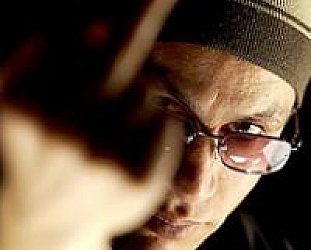

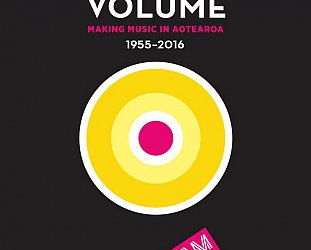
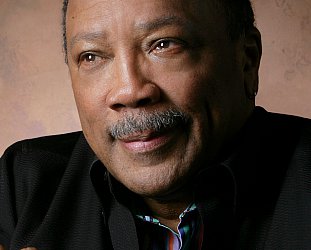
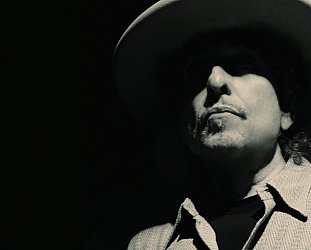
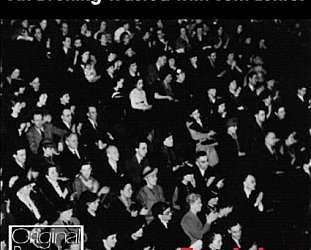
Chris Gaskell - May 13, 2010
Beautifully-written piece Graeme - vividly captures Patea and its people at that time. Hard to believe it's more than 20 years ago - with Dalvanius long gone, I wonder what it's like now?
SaveJohn Ringer - Sep 5, 2016
And now the film, which I would rank amongst our best ever. A stunning testament to some very special local culture that had me in tears (moving and laughing tears) for much of it. I'm not sure how much, if any, supporting funding went into the movie, but it certainly should have been well-supported. Beats the heck out of NZ on Air taxpayer money going into execrable reality tv. Poi e is where our heartland is - in the small towns and communities that keep getting hit but get up and keep getting on. I guess Tearepa Kahi's off to Hollywood now, though I bet Bollywood would also welcome him with open arms. A genius, like his bro Dalvanius. And here's to all those old unsorted forgotten drawers.
Savepost a comment